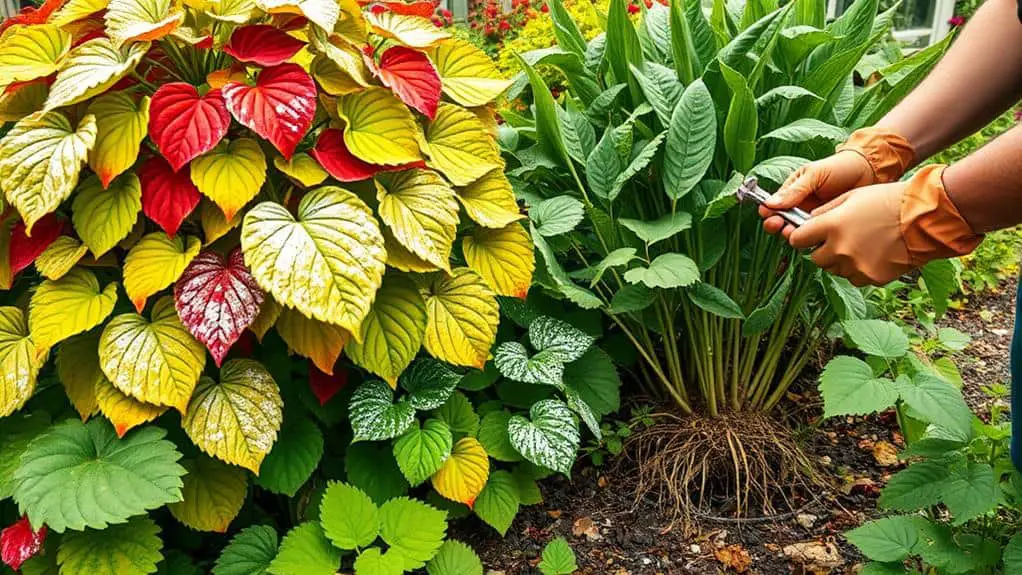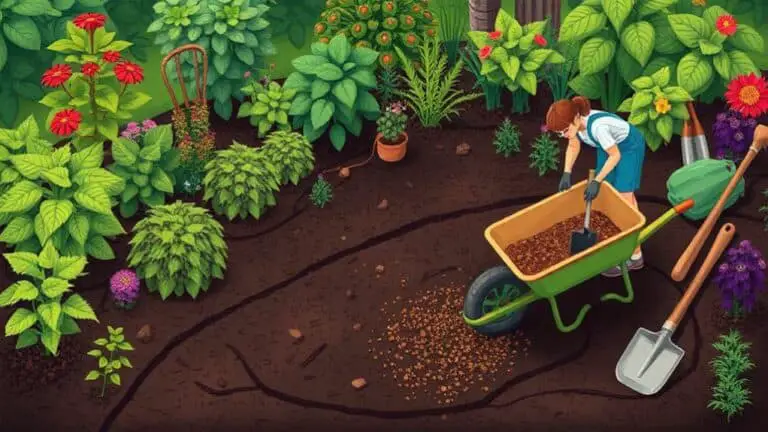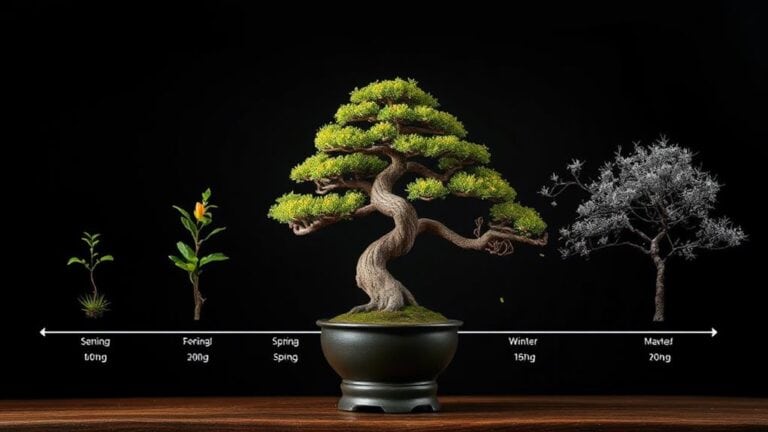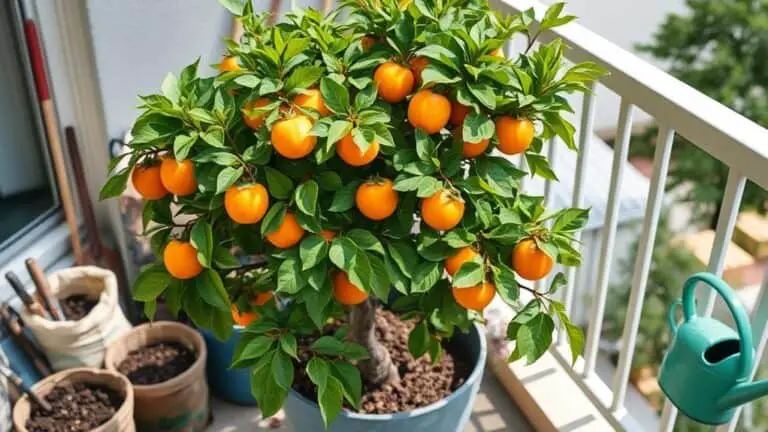Learn To Spot And Treat Summer Plant Diseases
Maintaining a healthy garden during summer starts with knowing how to spot and treat plant diseases. You need to recognize common symptoms like wilting leaves, yellowing, and dark spots right away. By using proper watering techniques, rotating crops, and ensuring good air circulation, you can prevent many issues before they start. However, when diseases like anthracnose, rust, or powdery mildew do appear, specific strategies such as fungicide application and removing infected foliage become essential. Curious about the best ways to protect your plants and keep them thriving all season? Let's explore effective methods and solutions.
Identifying Summer Plant Diseases
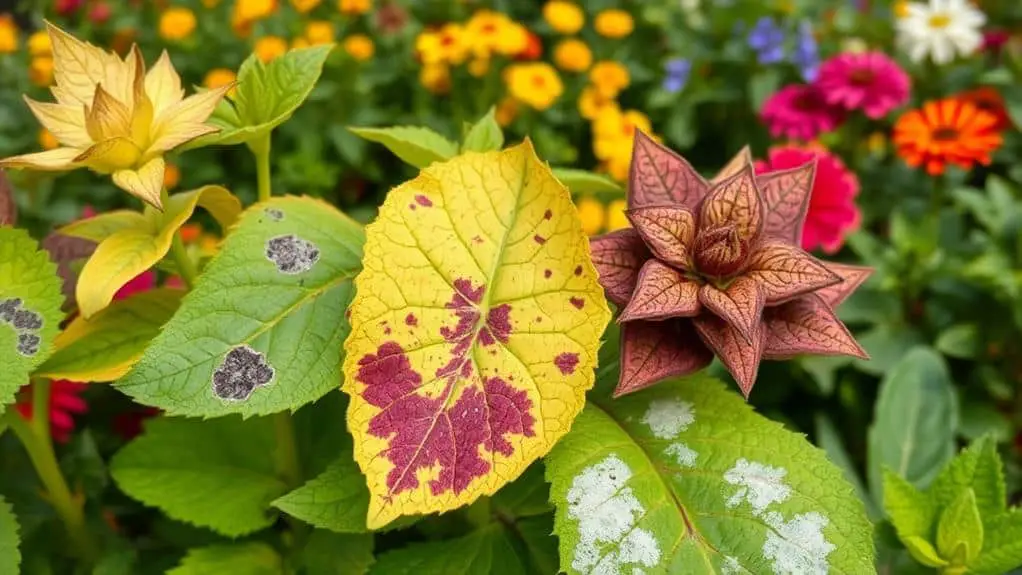
When summer rolls around, the warm and humid conditions create a perfect breeding ground for various plant diseases. Identifying summer plant diseases early can save your garden.
Common plant diseases like powdery mildew show up as a white, dusty coating on leaves and stems. Leaf spot diseases leave dark, necrotic lesions on foliage, often due to excess moisture. Overwatering might lead to root rot, causing wilting and decay, especially in poorly drained soil.
Bacterial wilt results in rapid wilting and death, thriving in high temperatures and humidity. Viral infections, like the Tobacco Mosaic Virus, cause mottled leaves and stunted growth, spread by insects like aphids.
To prevent fungal issues, guarantee proper watering and good air circulation.
Common Symptoms and Signs
When your plants start showing yellowing leaves or wilting, it's important to recognize these as potential signs of nutrient deficiencies or root issues.
Discolored stems and premature leaf drop can also indicate stress or disease, so keep an eye out for these changes.
Additionally, watch for dark, necrotic lesions or a white, dusty coating on foliage, which are telltale signs of fungal infections.
Identifying Plant Symptoms
Ever wonder why your plants look a bit off during the summer? Identifying plant symptoms like discoloration on stems or leaves, stunted growth, and leaf drop is essential. Yellowing leaves can mean nutrient deficiencies, diseases, or water stress. Wilting might suggest root rot or drought. Dark spots or irregular lesions often point to infections. Stunted growth could be due to root problems or nutrient deficiencies. Premature leaf drop indicates stress or disease.
| Symptom | Possible Cause | Action Needed |
|---|---|---|
| Yellowing leaves | Nutrient deficiency, water stress | Investigate soil and water levels |
| Wilting | Root rot, drought | Check soil moisture, roots |
| Dark spots on leaves | Fungal or bacterial infection | Inspect and treat immediately |
Identifying these symptoms early helps keep your plants healthy.
Recognizing Pathogen Signs
How can you tell if your plants are under attack by pathogens? Look for common symptoms like wilting leaves, which can point to root issues or water stress.
Yellowing leaves might mean nutrient deficiencies or disease. Fungal diseases often show up as white powdery coatings, known as powdery mildew, or dark spots on leaves, called leaf spot.
You might also see fuzzy gray mold from Botrytis blight or orange pustules from rust diseases. Discolored stems may indicate fungal or bacterial infections, while premature leaf drop can signal stress or disease.
Stunted growth often hints at root problems. By recognizing these signs of plant problems, you can act quickly to treat your plants and keep them healthy.
Anthracnose in Plants
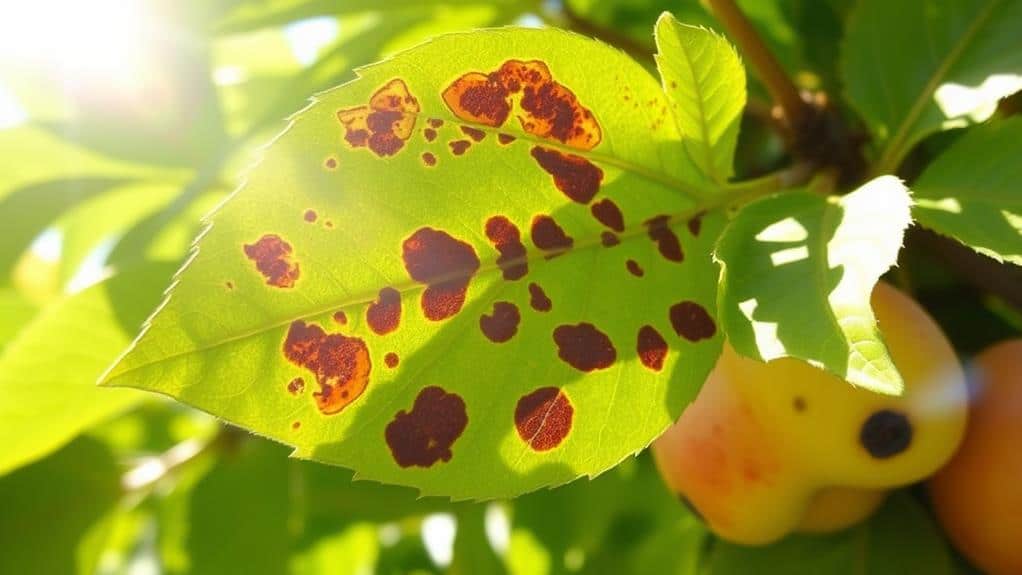
Anthracnose is a common fungal disease affecting many plants, caused by fungi from genera like Apiognomonia, Colletotrichum, and Discula.
You'll notice leaf spots and irregular lesions that follow the leaf veins. Leaves might wilt, and you could see damage spreading to the stem or branches.
This fungal disease overwinters in infected twigs and leaf litter, spreading in spring through rain splashes or wind.
To manage anthracnose, try these cultural management tips:
- Plant resistant varieties, like Appalachian Spring dogwood.
- Avoid excess water and overhead irrigation.
- Remove and dispose of infected leaves and twigs.
- Use fungicides like Spectracide Immunox for smaller plants.
Managing Rust Disease
After addressing anthracnose, let's turn our attention to managing rust disease. This pesky problem shows up as orange spores and pustules on the leaves and stems of your plants.
You'll first notice yellow spots on the top of leaves, which turn into rusty pustules underneath. If left untreated, rust disease can cause premature leaf drop, affecting plant growth.
Effective management strategies include planting resistant varieties like figleaf hollyhock and removing plants that easily get infected.
For chemical control, rotate fungicides such as Spectracide Immunox and Bonides Fung-onil every 7 to 14 days. For juniper rusts, apply fungicides in early spring to prevent the disease.
Botrytis Blight Control
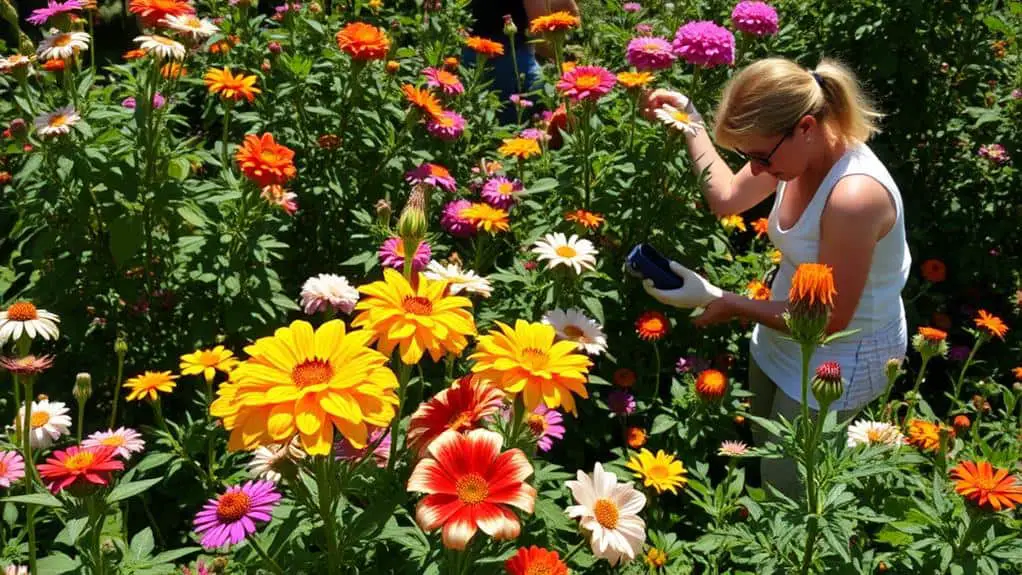
Botrytis blight, commonly known as gray mold, is a major headache for gardeners, especially in cool, damp conditions. This fungal disease, caused by Botrytis cinerea, affects many plants.
You can prevent it by using effective cultural practices. Here are some tips to keep your garden healthy:
- Space your plants adequately to improve air circulation.
- Avoid overhead irrigation to reduce humidity around the plants.
- Promptly remove spent plant materials to minimize fungal growth.
- Apply fungicides like Monterey AgriFos and Hi-Yield Captan 50W every 7 to 10 days during risky periods.
You can also choose resistant plant varieties like certain peonies and the Fantasy Blue petunia.
Downy Mildew Strategies
To tackle downy mildew, start by recognizing its signs: white to gray mold on the undersides of leaves, leading to discoloration and leaf drop.
This disease affects many plants, including bee balms, coleus, and roses.
Manage it by removing infected foliage, practicing proper watering techniques, and choosing resistant cultivars like Beacon or Imara impatiens.
Common Host Plants
Downy mildew is a formidable adversary for many popular garden plants, including bee balms, butterfly bushes, coleus, roses, and salvias.
These common plants are often targeted by downy mildew, leading to infected plants that struggle to thrive. To combat this, consider implementing these strategies:
- Choose resistant varieties: Opt for Beacon or Imara impatiens instead of susceptible options like Goldsturm black-eyed Susan.
- Water management: Avoid overcrowding your plants and remove decayed plant material promptly.
- Monitor plant health: Regularly check the undersides of leaves for signs of mildew.
- Spring cleanup: Remove any plant debris from the previous season to reduce the chance of oospore germination.
Symptoms and Signs
Ever wondered how to spot downy mildew before it wreaks havoc in your garden?
Look out for key symptoms like upper leaf discoloration and white to gray mold on the undersides of leaves. This fungal disease often leads to leaf drop if not caught early.
Downy mildew thrives in humid conditions, so guarantee good air circulation around your plants. Check for infected foliage frequently, especially in crowded areas where air might be restricted.
If you spot any signs, remove and destroy the affected leaves immediately.
Management Practices
Managing downy mildew effectively requires a combination of proactive strategies and vigilant care.
Start by choosing resistant varieties like Beacon or Imara impatiens to reduce the risk of infection.
Proper water management practices are essential: avoid overhead irrigation and water early in the day to minimize humidity, which promotes downy mildew growth.
Regularly remove and destroy any decayed plant material or infected foliage to prevent the spread of downy mildew in your garden.
Rotate crops annually to disrupt the life cycle of pathogens.
- Choose resistant varieties: Beacon or Imara impatiens
- Water wisely: Avoid overhead irrigation, water early
- Remove infected plant material: Destroy decayed foliage
- Rotate crops: Break pathogen life cycle
These steps, including organic options, will help keep your garden healthy.
Preventing Powdery Mildew
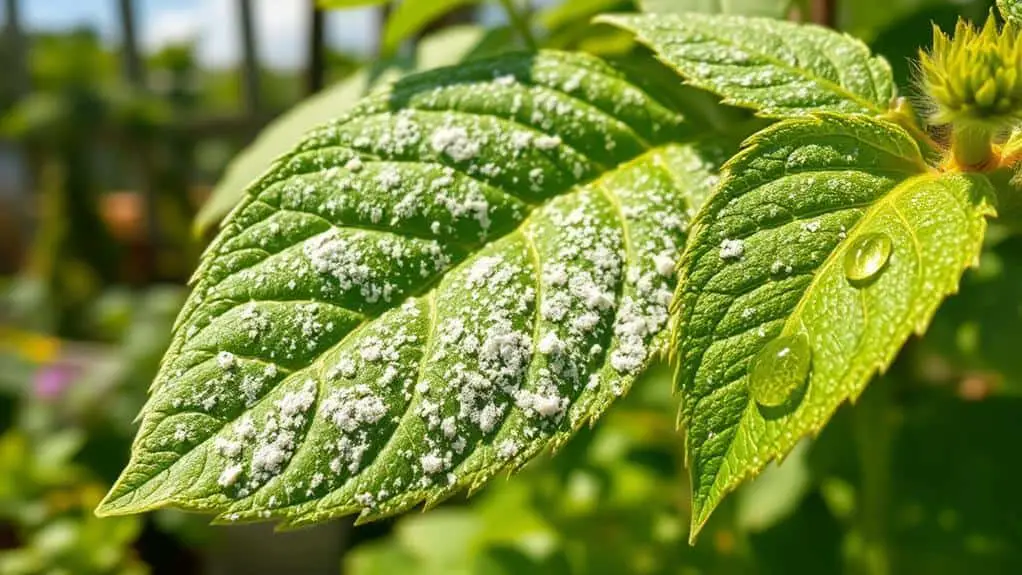
Powdery mildew, a bothersome fungal disease, manifests as a white, powdery coating on leaves, stems, and flowers, impacting plants like lilacs, apples, and cucumbers. To prevent powdery mildew, guarantee good air circulation around plant foliage by spacing them properly. Rake and destroy infected leaves in the fall to reduce overwintering spores. Also, avoid night watering and guarantee good drainage to minimize humidity, which powdery mildew loves. If you spot early signs, mix 1 teaspoon of baking soda in 1 quart of water and spray it on your plants. This can help keep that powdery menace at bay.
| Tip | Benefit |
|---|---|
| Space plants properly | Better air circulation |
| Destroy infected leaves | Reduces spores |
| Avoid night watering | Lowers humidity |
| Use baking soda spray | Effective treatment |
You're now better equipped to tackle powdery mildew!
Tackling Black Spot
Combating black spot, a pesky fungal disease, starts with recognizing its telltale signs: small black spots on leaves that lead to yellowing and premature leaf drop.
To manage black spot, start by keeping your garden clean. Remove any diseased leaves and canes to stop the fungus from spreading.
Here are a few tips to help you tackle black spot:
- Water properly: Avoid overhead watering to keep foliage dry.
- Improve air circulation: Space plants well to guarantee good airflow.
- Plant resistant varieties: Choose black spot-resistant roses like 'Knock Out' or 'Sunshine Daydream.'
- Use chemical controls: Apply fungicides such as chlorothalonil or myclobutanil at the first sign of symptoms, repeating every 7 to 14 days.
Following these steps will help keep your garden healthy and vibrant!
Addressing Mosaic Virus
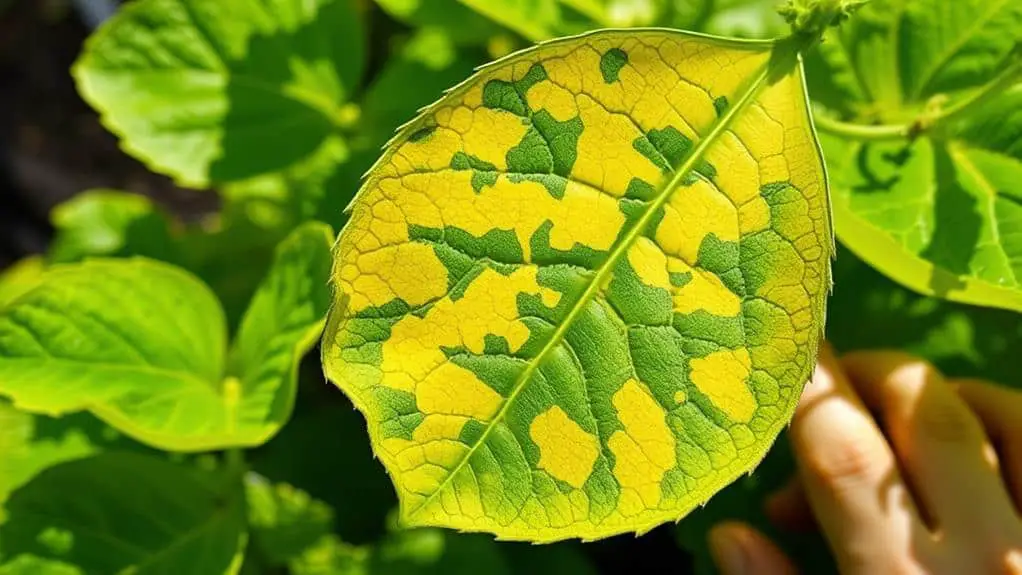
When dealing with the Mosaic Virus, you'll notice mottled yellow and green patterns on the leaves, stunted growth, and lower yields.
To prevent this virus, choose resistant plant varieties, wash your hands after handling plants, and avoid tobacco products in the garden.
If a plant gets infected, remove and destroy it immediately, and don't replant in that area for at least two years.
Symptoms and Identification
During the summer months, it's crucial to keep an eye out for symptoms of the Mosaic Virus in your garden. This plant disease can be tricky to identify, but knowing what to look for helps.
Watch for these telltale signs:
- Mottled yellow and green leaves: Leaves may show a patchwork of yellow and green.
- Stunted growth: Your plants mightn't grow as tall or robust as they should.
- Leaf curling and distortion: Leaves could curl up or look twisted.
- General decline in vigor: Overall, the plant may look unhealthy and tired.
Prevention and Management
Recognizing the symptoms of the Mosaic Virus is just the first step; now, it's time to focus on prevention and management.
Start by choosing resistant plant varieties to reduce infection risks. Good plant selection is key.
Keep your garden clean by removing and destroying infected plants. Don't replant in the same area for at least two years to avoid soil-borne infections.
Pest management is essential because insects like aphids can spread the virus. Always wash your hands after handling plants, especially if you've touched tobacco, which can carry the virus.
With these prevention and management steps, you can keep your garden healthy and vibrant, free from the challenges of this viral and fungal disease.
Community Resources and Support
Steering through summer plant diseases can feel challenging, but fortunately, community resources and support systems are readily available to help you succeed.
Local garden centers often host workshops on pest and disease management, offering hands-on experience and expert advice. Cooperative Extension Services provide tailored support, using sample examination and diagnostics to identify plant issues.
Online platforms like the Purdue Plant Doctor App help you diagnose problems accurately, enhancing treatment strategies. Joining community forums and social media groups fosters interaction among gardeners, promoting knowledge sharing and support.
Here are some great resources you can tap into:
- Local garden center workshops
- Cooperative Extension Services
- Purdue University's Plant Doctor App
- Community forums and social media groups
These resources will help you keep your garden thriving all summer long!
Frequently Asked Questions
How to Spot Diseases in Plants?
Spot plant diseases by observing leaf discoloration signs, wilting symptom causes, and unusual growth patterns. Look for pest damage indicators like sticky residues or webbing. Examine leaves closely for any unusual spots or mold formations.
What Is the Best Way to Solve Plant Diseases?
You should focus on preventive measures like improving soil health and pest management. Use natural remedies and resistant plant varieties. Regularly inspect plants and apply fungicides on a schedule to keep diseases at bay.
What Are the Four Common Plant Diseases?
You're dealing with four common plant diseases: leaf spots, root rot, powdery mildew, and blight. Manage these by keeping your garden clean, improving air circulation, and using fungicides when necessary. Stay vigilant for early signs.
How to Identify Fungal or Bacterial Infection in Plants?
You'll identify fungal or bacterial infections by symptom comparison and understanding disease progression. Fungal diseases create necrotic lesions, spreading inward, while bacterial ones cause uniform yellowing and wilting. Plant resilience and environmental factors also influence symptoms.
Conclusion
By keeping an eye out for symptoms like wilting leaves and dark spots, you'll be ready to tackle summer plant diseases head-on. Use proper watering techniques, crop rotation, and guarantee good air circulation to prevent problems before they start. If issues do arise, don't hesitate to apply fungicides and remove infected parts. With these strategies, you'll keep your garden healthy and thriving. Remember, you've got this, and your plants will thank you!

